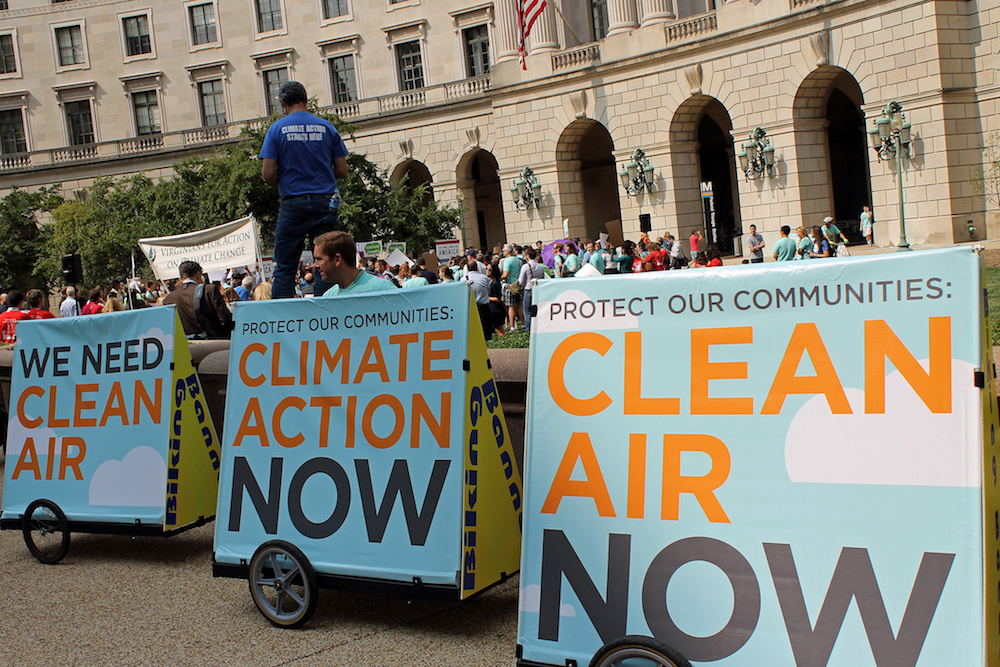This is a guest post by ClimateDenierRoundup.
Back in March, and then again in May, we flagged efforts by Pruitt and the GOP to bend the knee to the tobacco and fossil fuel industries and grant pro-pollution voices even more of a say on science advisory panels. One such panel is the Clean Air Scientific Advisory Committee (CASAC), which according to its website, “provides independent advice to the EPA Administrator on the technical bases for EPA‘s National Ambient Air Quality Standards.”
The nominations for new members of the CASAC are in, and while most of the names look like solid scientists (.pdf list here), there are a few with affiliations and funding that might raise some eyebrows. (Fortunately, the public comment period is open, so interested persons have until September 18th to email their concerns to Mr. Aaron Yeow, designated federal officer, at [email protected].)
A quick scan of the list shows that a handful of nominees disclose funding from the Health Effects Institute, a public/private project funded half by the auto industry and half by the EPA. There is also an ExxonMobil scientist, Jeffrey Lewis. These affiliations aren’t necessarily bad by default, or make a nominee immediately untrustworthy: there is, after all, some utility in hearing from some honest industry voices.
We do, however, see three nominees who should be ringing alarm bells: Louis Anthony Cox Jr., Deane Waldman and S. Stanley Young.
Private consultant Louis Anthony Cox Jr. has produced a number of studies casting doubt on the benefits of the Clean Air Act’s PM2.5 and ozone standards for public health. Though he’s worked with respectable groups like the National Academies, National Research Council and EPA in the past, he’s also done multiple projects for corporate interests like the American Petroleum Institute (disclosed here), smoking giant Philip Morris International, fossil fuel lobby groups like the Western States Petroleum Association and Western Oil and Gas Association, and for other special interest groups like the National Mining Association and National Pork Board (disclosed here .pdf). Perhaps most troublingly, Cox has also testified in Congress in support of the Secret Science Act, which was (and new iterations continue to be) strongly opposed by mainstream science groups.
Then there’s Deane Waldman. Waldman’s curiously short bio ends by stating that his goal as a member of the advisory board would be to make sure the EPA policies are “based on reliable science” that can “directly connect Clean Air standards to the health status of Americans.” If that sounds like industry-funded doublespeak, that may be because Waldman is the director of the Koch/Exxon/tobacco industry-funded Texas Public Policy Center’s Public Health Center. His relative lack of commendable credentials and paycheck from big business calls into question his interpretation of “reliable science.”
Finally, there’s S. Stanley Young, who is affiliated with the industry-funded Heartland Institute. He also serves as an advisor to the American Council on Science and Health, which as far back as 1979 was described by the FDA’s information director as “a sham, an industry front.” Per the bio, Young’s recent research was funded by the deceptive and fossil–fuel backed National Black Chamber of Commerce and the American Petroleum Institute.
Bringing Young’s worrisome credentials home for regular Climate Denier Roundup readers, Young teamed up earlier this year with JunkScience’s Steve Milloy to attack the NAS on PM2.5 research. If Young makes it on the board, it will be a clear victory for Milloy, who has consistently pushed for the EPA to listen more closely to whatever would maximize profits for his tobacco and fossil fuel friends.
It seems to us if members of CASAC have financial relationships with the industries the group is supposed to be regulating, it would hamper their ability to provide “independent advice.”
Not that a conflict of interest ever held anyone in Trump’s administration back …
Main image: Rally for clean air outside of the U.S. Environmental Protection Agency’s D.C. offices. Credit: Karen Murphy, CC BY–ND 2.0
Subscribe to our newsletter
Stay up to date with DeSmog news and alerts






